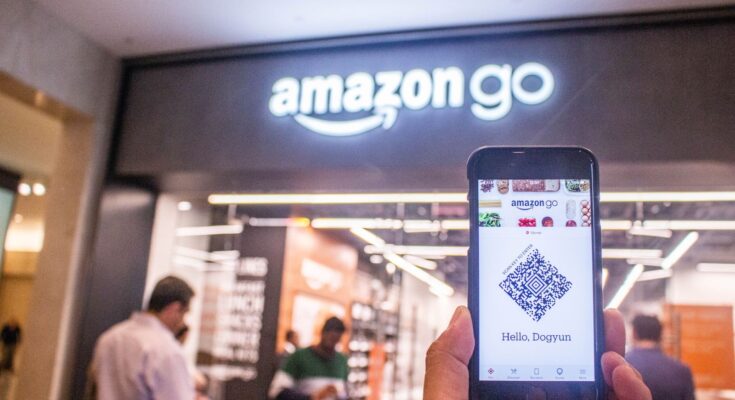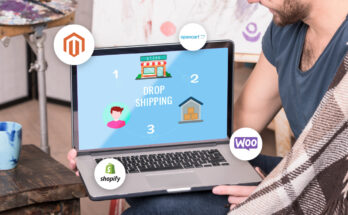Introduction
Find new ways to use Amazon’s many marketplace features without managing physical inventory. Explore various options such as affiliate marketing, digital content publishing, service offerings, etc. Engaging with these channels can reach Amazon’s many customers and generate easy management revenue.”
How to Sell on Amazon Without Selling Products

Affiliate Marketing
Affiliate marketing is a performance-based marketing strategy where individuals or businesses promote products or services on behalf of a merchant (such as Amazon) through unique affiliate links. When a customer purchases through these links, the affiliate earns a commission.
Here’s how affiliate marketing typically works:
- Joining an Affiliate Program: Affiliates sign up for an affiliate program like Amazon Associates and receive a unique affiliate ID and links to promote products.
- Promoting Products: Affiliates promote products or services using their affiliate links through various channels such as websites, blogs, social media, email newsletters, or YouTube channels.
- Generating Sales: When a customer clicks on an affiliate link and purchases within a specified time frame (usually within 24 hours but can vary), the affiliate earns a commission on that sale.
- Earning Commissions: Commissions vary depending on the affiliate program and the type of products being promoted. Amazon Associates, for example, offers commission rates ranging from 1% to 10% depending on the product category.
- Tracking and Analytics: Affiliate programs provide tracking tools and analytics to monitor clicks, conversions, and commissions earned, allowing affiliates to optimize their marketing efforts.
Affiliate marketing offers several benefits, including:
- Low Startup Costs: Affiliates don’t need to create or own products, reducing the initial investment required to start.
- Flexibility: Affiliates can choose which products to promote and how to promote them, giving them flexibility in their marketing strategies.
- Passive Income Potential: Once set up, affiliate links can generate passive income as long as they continue to drive sales.
- Access to a Wide Range of Products: Affiliates can promote products from various merchants, giving them access to a diverse range of products to promote.
- Overall, affiliate marketing is a popular and effective way for individuals and businesses to monetize their online presence and earn commissions by promoting products or services they believe in.
Kindle Direct Publishing (KDP)
Kindle Direct Publishing (KDP) is Amazon’s self-publishing platform that allows authors and independent publishers to publish and distribute their books directly to Kindle devices and Kindle reading apps.
Here’s how Kindle Direct Publishing works:
- Creating an Account: Authors and publishers sign up for a free account on the KDP website.
- Formatting the Manuscript: Authors prepare their manuscript according to Amazon’s formatting guidelines. They can upload the manuscript in various formats such as Word, PDF, or ePub.
- Designing the Cover: Authors design or commission a cover for their book. Amazon provides guidelines and templates to help create a professional-looking cover.
- Setting the Price and Royalties: Authors set the price for their book and choose between two royalty options: 35% or 70%. The royalty rate depends on factors such as the book’s price, file size, and distribution options.
- Publishing the Book: Once the manuscript and cover are ready, authors upload them to the KDP platform and fill in the book’s details such as title, description, and keywords.
- Choosing Distribution Options: Authors can choose between two distribution options: Kindle Store (exclusive to Amazon) or Expanded Distribution (available to other retailers and libraries).
- Previewing and Publishing: Authors preview their book using Amazon’s online previewer to ensure everything looks correct. Once satisfied, they publish the book, making it available for purchase on Amazon.
- Promoting the Book: Authors are responsible for promoting their book to reach potential readers. This can include marketing efforts such as social media promotion, book giveaways, email newsletters, and advertising.
- Earning Royalties: Authors earn royalties from book sales based on the chosen royalty rate and the book’s sales performance. Royalties are paid monthly by direct deposit or check.
Kindle Direct Publishing offers several advantages for authors and publishers:
- Control and Flexibility: Authors retain control over their work and have the flexibility to set their prices, make updates, and choose distribution options.
- Global Reach: KDP allows authors to reach readers worldwide through Amazon’s global distribution network.
- Low Barrier to Entry: KDP is free to use, making it accessible to aspiring authors and independent publishers.
- Earn Higher Royalties: With the 70% royalty option, authors can earn higher royalties compared to traditional publishing deals.
- Overall, Kindle Direct Publishing empowers authors to bring their stories to a global audience and earn royalties on their book sales with minimal upfront costs.





I truly appreciated the work you’ve put forth here. The sketch is tasteful, your authored material stylish, yet you appear to have developed some nervousness regarding what you intend to deliver next. Rest assured, I’ll return more regularly, much like I’ve done almost constantly, should you maintain this upward trajectory.